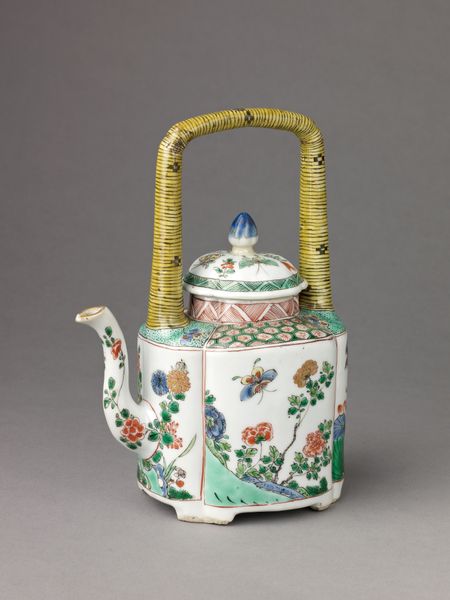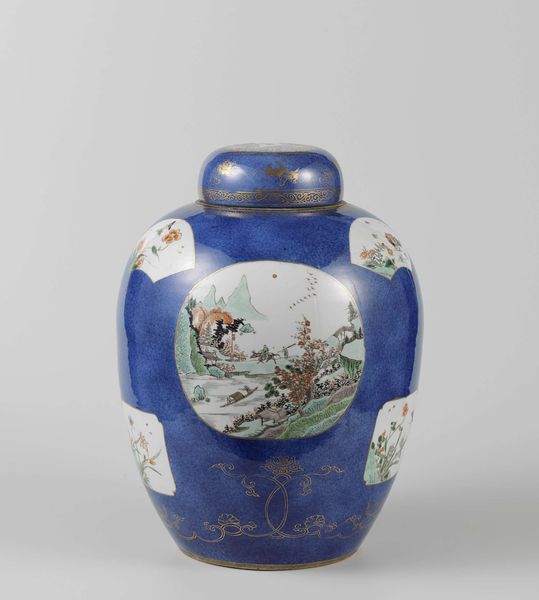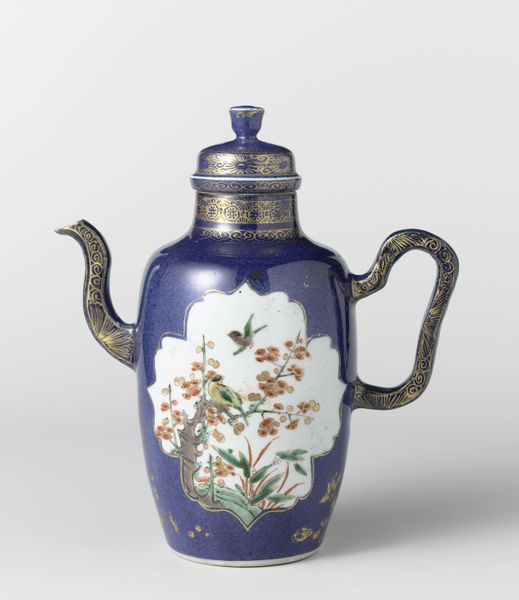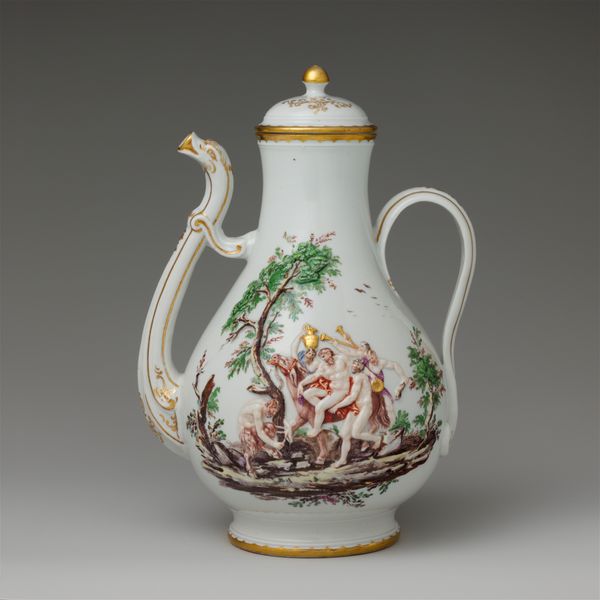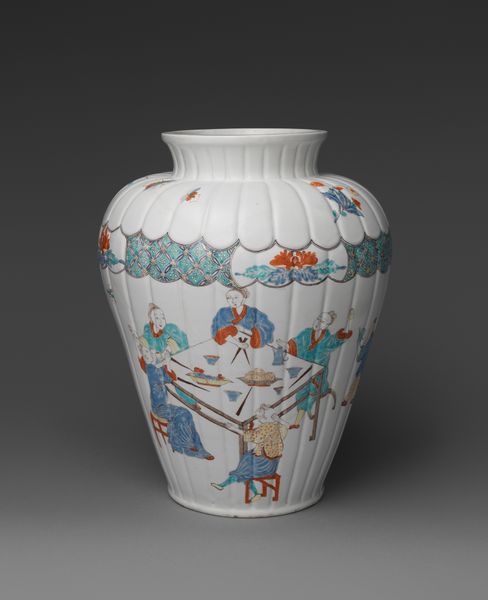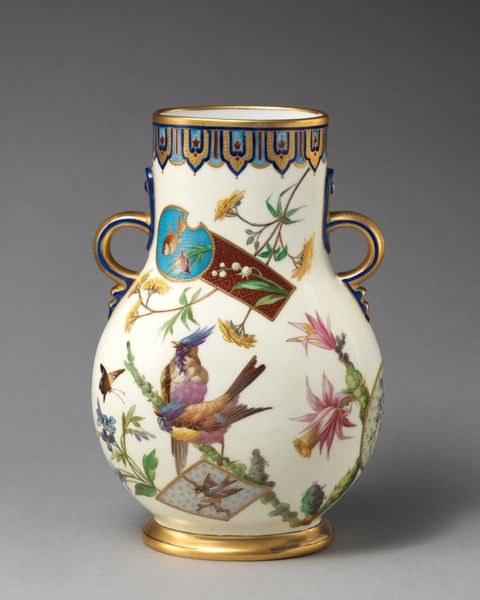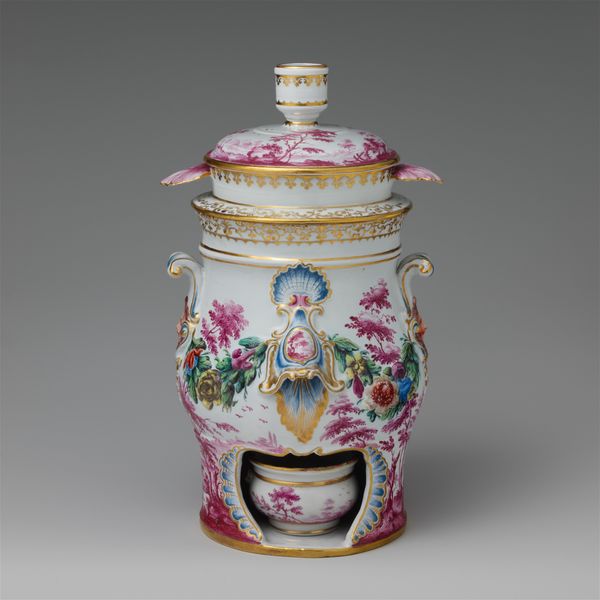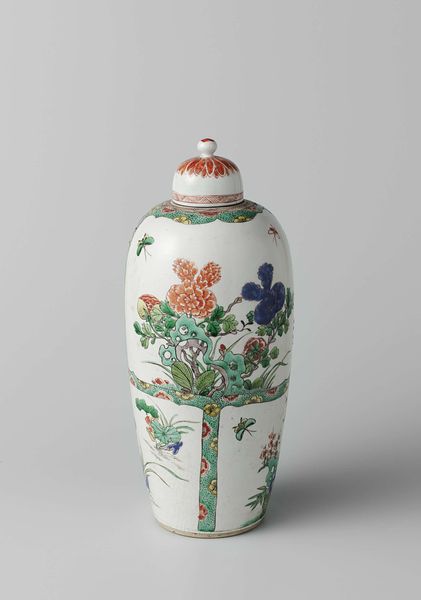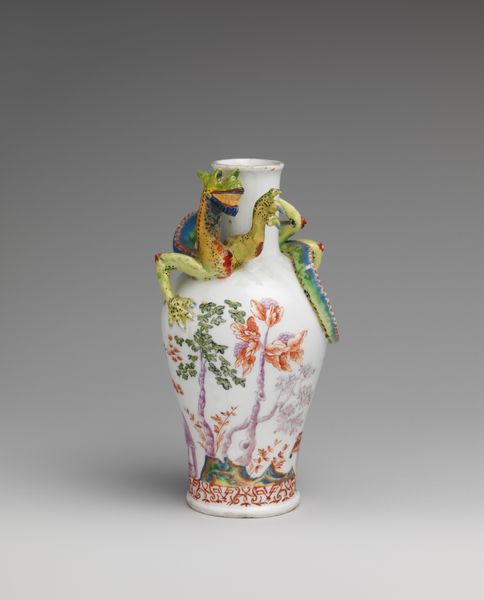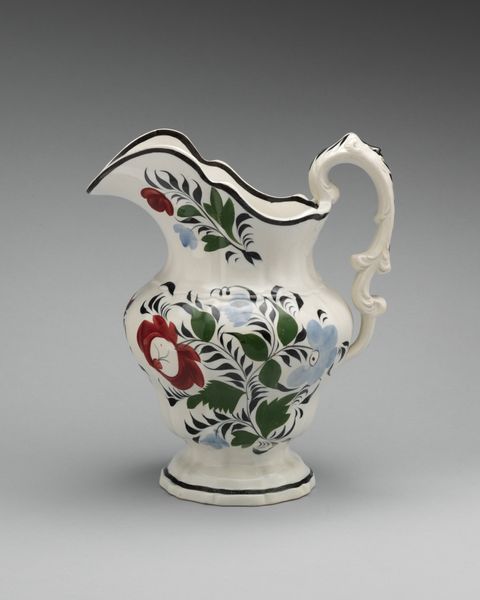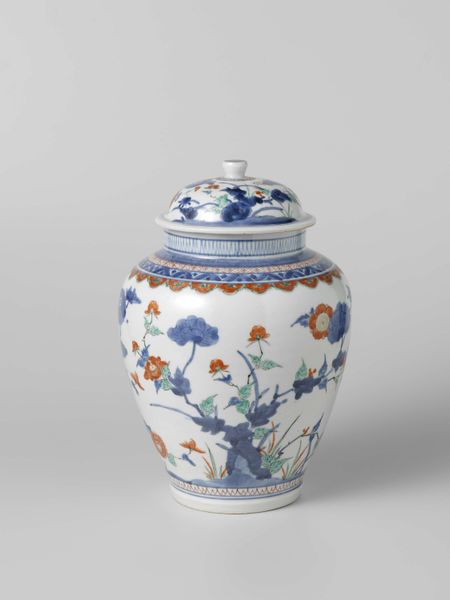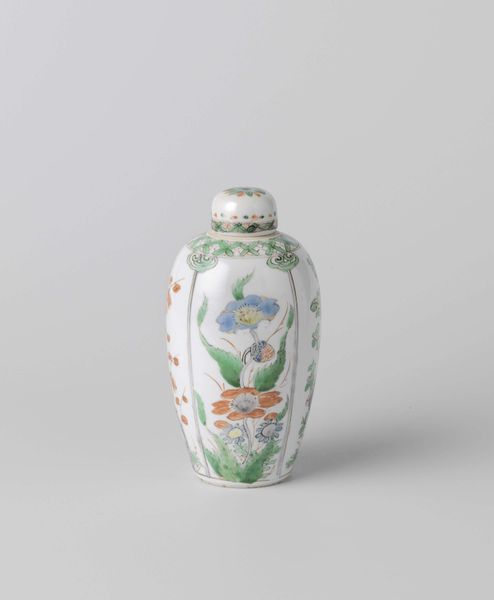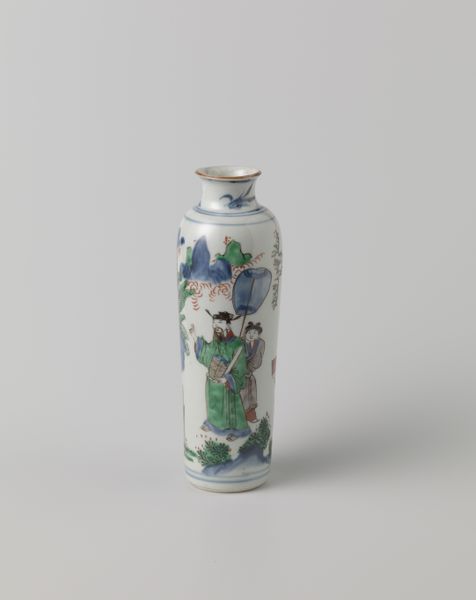
ceramic, sculpture
#
ceramic
#
sculpture
#
orientalism
#
decorative-art
#
rococo
Dimensions: Height: 9 1/4 in. (23.5 cm)
Copyright: Public Domain
Curator: Here we have an ornate tankard, crafted by Adam Friedrich von Löwenfinck between 1741 and 1744. It's currently held in the Metropolitan Museum of Art. What's your first impression? Editor: Overwhelmingly... intricate. It's a visual feast of color and delicate forms. The eye bounces across the surface; it's so busy with floral motifs and insectile life. I'm curious about the silver mounting; does it seem original? Curator: The interplay of hard, reflective metal and glazed ceramic is striking. The lid and hinge hardware would be the work of a silversmith. I think that’s quite common of such works of the period. But the main interest resides, naturally, with the porcelain. Editor: I’m drawn to how Löwenfinck transformed the labor of porcelain production. We should be reminded of all that it took to produce this. Think of the mining of the kaolin clay, the careful moulding of it, the precise decoration of it, and the labor specialization of the workshop required to execute the artist's aesthetic. The global networks involved are striking. Curator: Precisely. The decoration takes clear cues from East Asian art, demonstrating the fascination with the exotic "Orient" so characteristic of the Rococo style, yet mediated by European sensibilities. Do you feel, in the visual language used here, that we can decode anything? Editor: I think it's fascinating how porcelain becomes a stand-in for the "exotic" in this period. But the function as a utilitarian object, for drinking, remains paramount. It seems less concerned with weighty allegory and more focused on pleasurable experience—which aligns perfectly with Rococo aesthetics. It points to an evolving consumer culture; access to such an elaborate drinking vessel implies a specific kind of privileged owner and culture of use. Curator: Its sinuous lines and asymmetrical balance are delightful; there’s almost a rejection of strict formality. I can appreciate how the piece moves away from classical art values to one dedicated to fantasy. Editor: Reflecting on its context helps us better appreciate how Löwenfinck navigated art, labor, and the market of luxury objects, doesn't it? Curator: Yes. Ultimately, this tankard beautifully encapsulates the dialogue between cultures that animated so much of the decorative arts during this period.
Comments
No comments
Be the first to comment and join the conversation on the ultimate creative platform.
